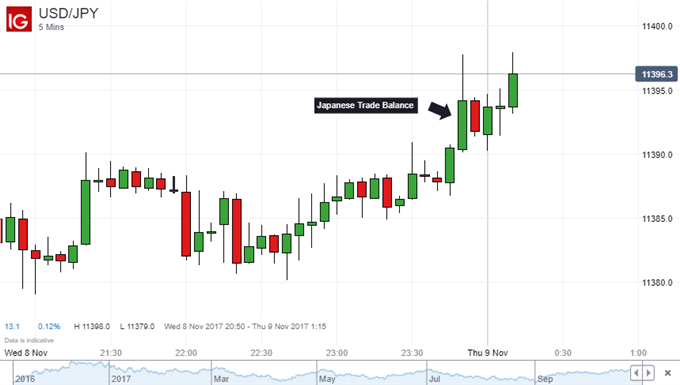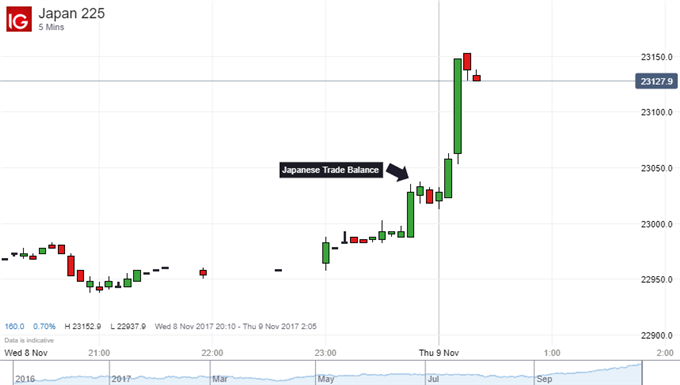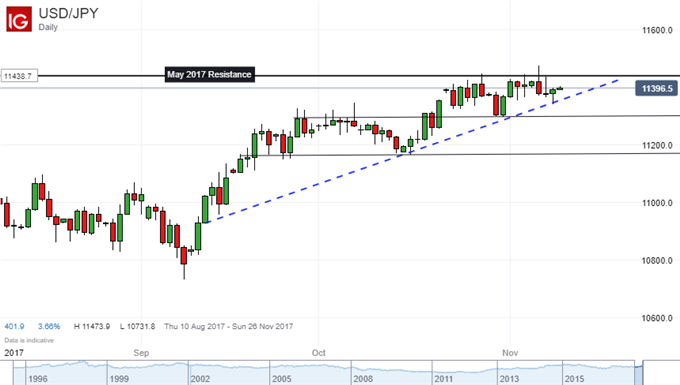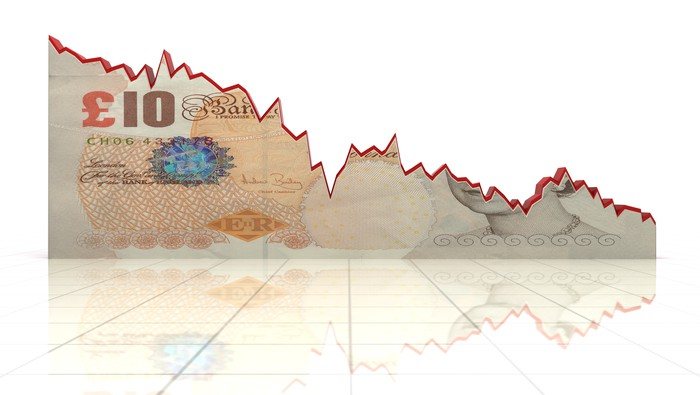Talking Points:
- Japan’s trade balance and current account data were mixed, but exports did improve
- The anti-risk Yen probably seemed less attractive as Nikkei 225 gains got the attention
- Intraday IG client sentiment points to a stronger USD/JPY bullish contrarian view
Have a question about why the Japanese Yen did what it did? Join a Q&A webinar and ask it live!
The Japanese Yen did not take kindly to a mixed set of trade statistics. Japan’s trade surplus turned out a little bit better than the ¥832.5b estimate coming in at ¥852.2b in September from ¥318.7b in August. This was the largest trade surplus since March. Meanwhile, the current account balance fell from ¥2380.4b to ¥2271.2b which was worse than the ¥2363.4b projection.
The details of the report showed that exports rose from ¥6165.6b to ¥6725.3b while imports stayed little-changed. For an economy that relies more on exporting, this could be a good sign for growth. Even so, the markets likely had their attention elsewhere.
As the trade data crossed the wires and in the aftermath, the Nikkei 225 enjoyed a modest boost. Relatively speaking, this saps the appeal of the anti-risk Yen if traders are in a bright mood and more interested in risk-taking. This is likely why we saw the currency depreciate.
Keep an eye on the intraday IG client sentiment reading for USD/JPY. It now shows that traders are further net-short and that the recent changes gives a stronger bullish contrarian trading bias. This might mean USD/JPY could continue to rise.


On a daily chart, USD/JPY has been rising since September 8th and has closed Wednesday sitting right on top of a rising support line. However, even as the pair continued to rise, it could not break above a resistance line which goes back to May this year. A close below rising support would put the late-September line in view.







